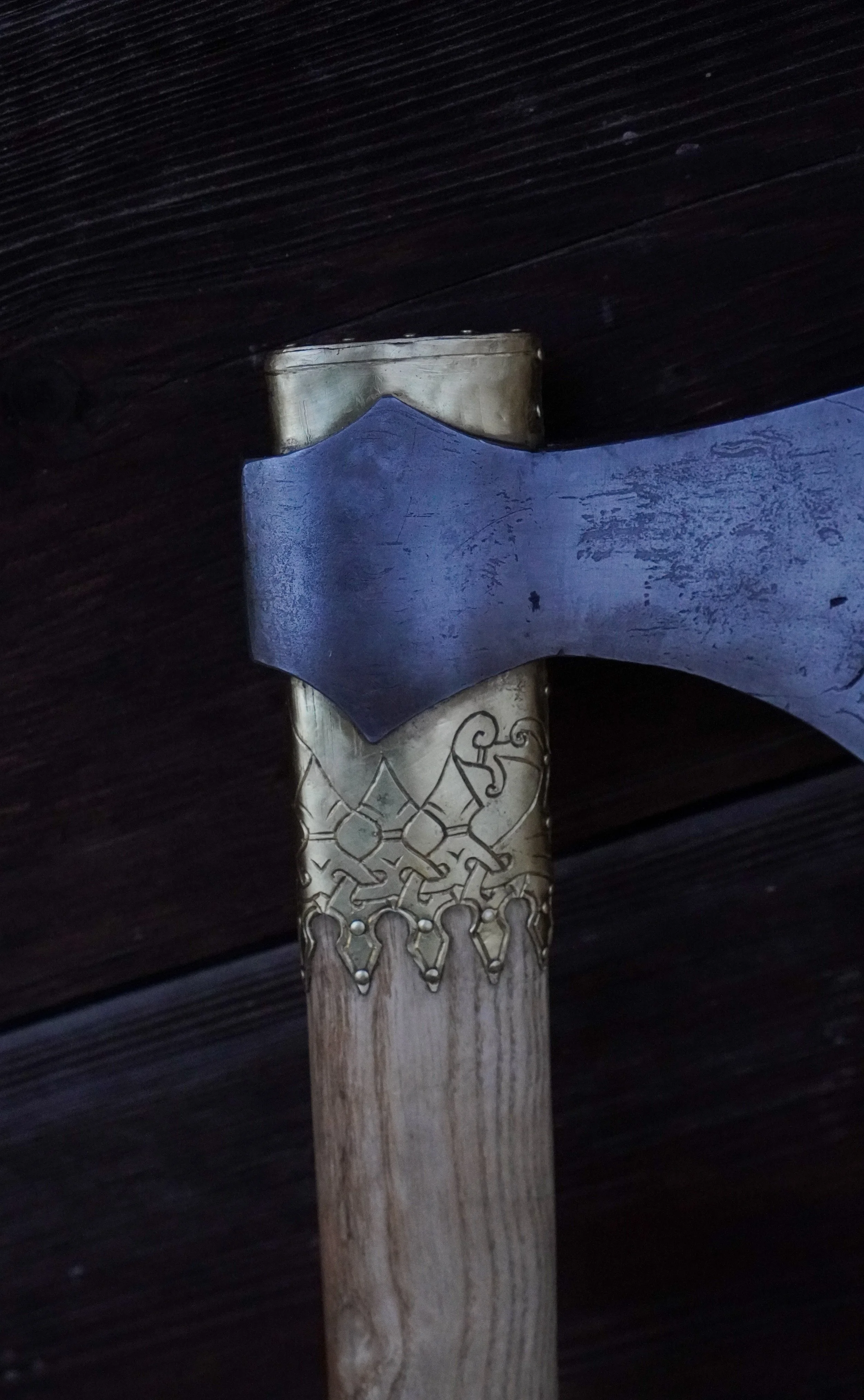
When trying to describe what I do, I often struggle to find the correct term. A prominent part of my work is crafting weaponry from the medieval period. Each piece is made by me from the beginning to the very end. Starting with the blade, through precious metal inlaying, carving and other techniques to the last finishing touches.
Every high-end replica takes not only manual labour, but also a notable amount of research, be it of used techniques, materials or often filling the decayed blanks of ornament. Through this I hope to shine light on fragments of history, reimagining artifacts in their original glory.
Historical Replicas
The Mammen Axe
An ornate, quite possibly ceremonial axe found in Denmark, near the village of Mammen. The axe is decorated with ornament of the mammen style, named after this very find. Originally an artstyle of the court and therefore popularized, it innovated and pushed forth viking art as a whole.
While the interpretation and meaning of the motif still remains to be largely speculative, the silver inlays depict a natural, floral motif on one side of the blade and a bird figure on the other, perhaps a rooster. Furthermore typical geometric and scrollwork segments decorate the eye alongside a triangular face.
Since some elements of the original ornament are unreadable, an important part of reconstructing the artifact was reimagining the ideas and rules of the original. As well as choosing the correct shape of the eye, with flat lugs. Making it a type L axe by Petersen’s axe typology.
Side featuring natural ornament
Side featuring the bird
The Sword from Dalarna
A magnificently decorated viking age sword found in Sollerön, Sweden. The dating of this sword is 985-1050 AD.
The replica of the sword weighs in at 1420 grams, while the original in its corroded state weighs 1318 grams. Each part of the sword is carefully sculpted to follow the original shapes, weight and dimensions as closely as possible.
The blade was forged from 500 layer damascus steel, the fittings from wrought iron heavily inlaid with silver and brass. Grip is made of leather covered wood and silver rings.
The sword is available for purchase, if interested contact me.
Axe from London Bridge
Petersen type M axe found in the river Thames in London, dated to circa 900-1000 and quite probably part of a very important battle.
The axe most prominently features a carved copper alloy collar on the haft. When tasked with recreating items of the past, we often face the struggles of recreating the object exactly as is, be it a bit crooked and all over the place or cleaning the ornamament up a bit to appeal to the modern eye. In this instance, seeing quite a lot of potential in the decoration I decided to refurbish the ornament slightly and make it cleaner than the original. The axe is made to be quite lightweight for its formiddable size. That being thanks to the thin, wrought iron body and blade forge welded over it. A signature feature of many type M axes.
The axe is available for purchase. If interested, contact me.
photos by Monika Baráková









